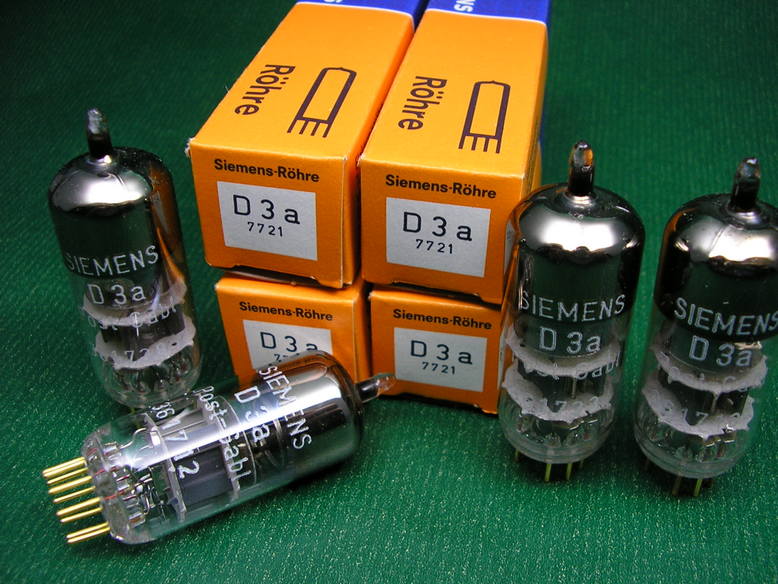
|
back to www.audiodesignguide.com |
To get more information contact me at: webmaster@audiodesignguide.com |
INTRODUCTION
Many vacuum tube phono preamplifiers are designed using the 12AX7 and the 6SL7. These are high gain tubes but high internal resistance so it is necessary to have 3 tubes on the signal path to reduce output impedance or use circuit topologies like SRPP (totem pole).
There are few tubes with high gain and low internal resistance like the pentode D3A. The D3A it is easy to find on the market and the performances in triode connection are fantastic. In my PF2007 and in my new cheap 2A3 PSE it is possible see some measurements results.
The sound of this simple phono preampl. is incredible and it is better than any other types tested in this years.
If you are using MC cartridges I suggest to use a step-up transformers like the 9580 Sowter 1:12.5 (photo on the left) or better the Lundahl LL1931 1:16.
I have tested both types with my Rega Planar 3 and Denon DL103. Using the Lundahl LL1931 the sound is more open and with more details.
 |
The cabinet used for the pre-ampl. is a Hi-Fi 2000 model GX 387 with internal size 310 x 170 x 80 got from www.audiokit.it .
For this cabinet it is available also a 10mm front panel to increase the aspect.
COMPONENTS
In this projects has been used very
good components like the WIMA MKP red box capacitors as interstage and in the
RIAA circuit and these has been selected in value with 1% tolerance.
The WIMA MKP are used by many companies like Audio Research and Mark Levinson.
The resistors are all 1% metallic layer and these has been used in parallel - inverted connection to reduce the parasite inductance.
On cathode the by-pass are good Sanyo OS-CON capacitors considered better than old ELNA Cerafine and Black Gate.

DESIGN
To calculate the RIAA network I have used the spreadsheet of Fabrizio Marignoni

The operation point of the D3A has been the result of many measurement with the Clio system by Audiomatica.

To get the max sonic performances and long vacuum tubes life has been used a slow turn on power supply for the filaments and a virtual battery operation power supply for the anodic.

For this power supply I have used the R-CORE model R26-90 by DiyClub.Biz with primaries 2 x 115v and seconaries 0-165v(0.2A) + 2 x 0-9v (1.1A).
A capacitor must be connected on anodic voltage output, 220uF Blackgate, Jensen electr. ELNA Cerafine or Rubycon.